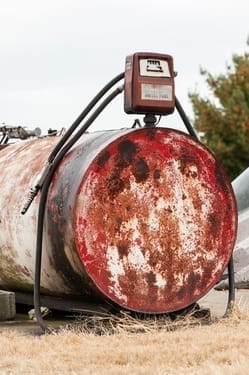
As we wrap up National Groundwater Awareness Week, we look at a potentially cancer-causing chemical that can seep into groundwater and water supplies from old leaking gasoline storage tanks — underground and surface level — or from pipeline breaches: methyl tertiary butyl ether, known as MTBE. This now-banned gasoline additive has been shown to cause problems at high concentrations in lab-animal subjects with organ damage, cancer, nervous-system problems and possibly reproductive harm.
History of MTBE
MTBE was first used in gasoline to combat smog in the late 1970s because it can lower dangerous emissions like carbon monoxide. As problems with the chemical emerged, states started restricting its use, until in 2006 federal law eliminated its use in gasoline. However, older gasoline stored in aging tanks can still leak into the environment and MTBE stays in polluted water because it does not biodegrade.
MTBE can also enter the aquatic environment from individual engines like those on boats or from emissions. It can also enter groundwater through soil seepage.
The American Cancer Society explains that MTBE by its nature is a particularly problematic water pollutant because it is relatively soluble, moving quickly through groundwater, potentially to community and private water sources. The chemical can also contaminate surface water.
Human exposure
MTBE exposure can occur by inhalation of its fumes given off from contaminated water in cooking or washing, through the skin or by drinking it. The chemical often tastes and smells very unpleasant.
People who ingest MTBE or breathe in its fumes have experienced a variety of symptoms of concern:
- Headaches
- Mucous membrane irritation (eyes, nose, throat)
- Nausea and vomiting
- Disorientation
Expert opinions are mixed about whether enough evidence exists to conclude that MTBE is a confirmed carcinogen in humans, but the results in animal experiments are of great concern. The long-term ramifications of human exposure are still being studied.
Legal ramifications
Because MTBE remains in water once contaminated, people could continue to be harmed for years. For example, in early 2017, officials in New York’s Manorville Pine Barrens near the Hamptons were involved in an ongoing, difficult investigation of contaminated wells from MTBE at 40 to 90 feet underground, according to Riverhead Local. The source has not yet been discovered.
Brayton Purcell LLP represents clients wrongly exposed to MTBE and other toxic chemicals in personal injury lawsuits across the country.













